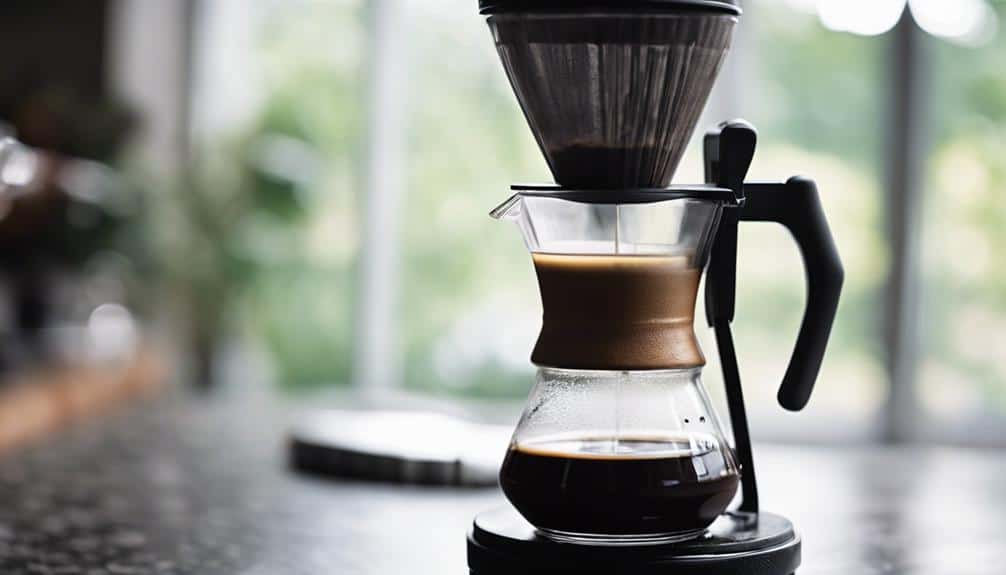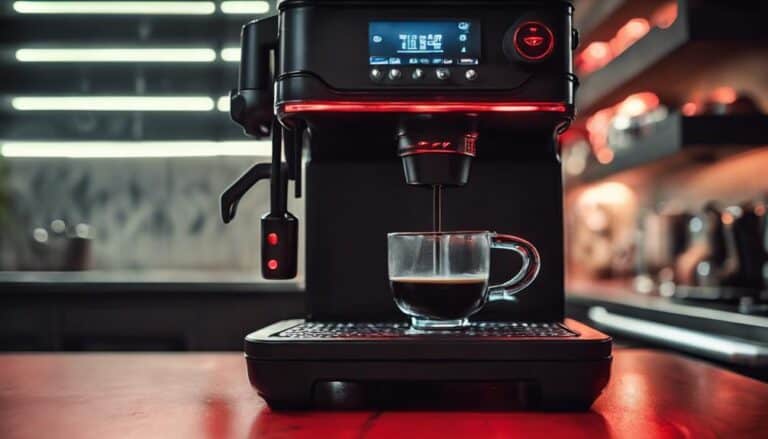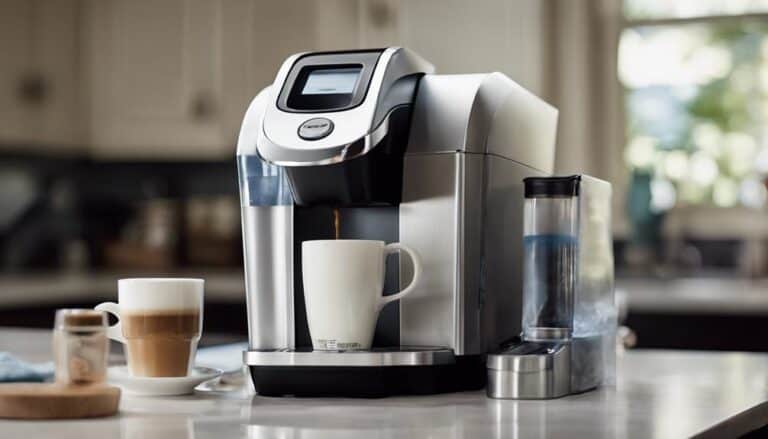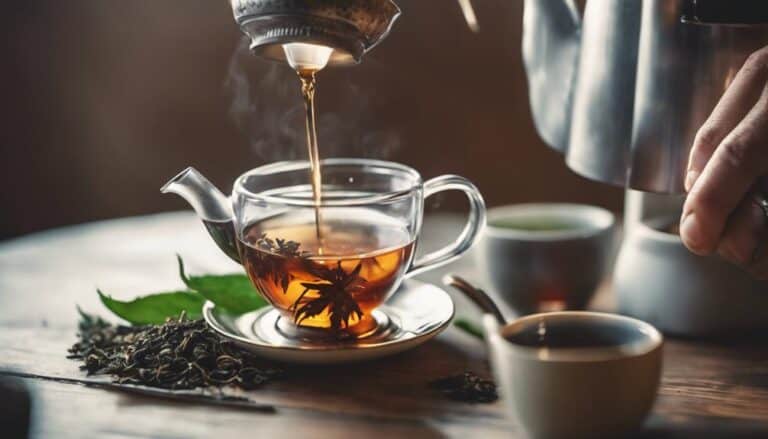Mastering the Perfect Pot of Coffee Ratio

Mastering the perfect pot of coffee ratio is akin to finding the sweet spot where flavor and balance harmonize. Each morning, as I stand before my trusty coffee maker, the quest for that ideal ratio feels like an intricate puzzle waiting to be solved. With every scoop of coffee grounds and precise measurement of water, the anticipation of that first sip lingers in the air, promising a sensory experience that transcends mere caffeine intake. Join me on this journey as we uncover the secrets to crafting the perfect cup of coffee, one ratio at a time.
Importance of Coffee-to-Water Ratio
Understanding the importance of the coffee-to-water ratio is the key to discovering the perfect cup of coffee every time. The ratio of coffee to water in your brew is like a symphony where each note must be perfectly tuned to create a harmonious blend of flavors. It's not just about throwing some ground coffee into your coffee maker and hoping for the best; it's a precise art that can elevate your coffee experience to new heights.
Brewing the perfect pot of coffee starts with the right amount of coffee to water. This magic ratio can range from 1:16 to 1:20, depending on your taste preferences. By adjusting this ratio, you have the power to customize your brew to suit your exact liking. Whether you prefer a stronger, bolder cup or a milder, smoother one, the coffee-to-water ratio is the compass that guides you towards your ideal brew. Consistency in this ratio guarantees that each pot you brew will be a delicious masterpiece, setting the stage for a perfect coffee experience every time.
Finding Your Ideal Coffee Strength
To craft the perfect cup of coffee tailored to your taste preferences, adjusting the coffee-to-water ratio is the key to discovering your ideal coffee strength. When I brew my coffee, I pay close attention to the ratio of coffee grounds to water to make sure I achieve that perfect brew.
By experimenting with different ratios, I can control the strength of my coffee, whether I prefer a bold and robust flavor or a milder taste. Factors like grind size, brew time, and the type of beans I use also play an important role in determining the strength of my coffee.
Consistency in my coffee-to-water ratio is essential for achieving the ideal coffee strength every time I brew a fresh cup. It's all about finding that balance that brings out the best in the coffee flavors, giving me a satisfying and consistent coffee experience tailored just for me.
Understanding Different Brewing Methods

When I explore different brewing methods, each one reveals unique flavors and characteristics that excite my taste buds. From the bold richness of French press to the delicate balance of pour-over, each method brings out distinct nuances in the coffee beans. Espresso, with its concentrated shot, offers a strong and aromatic experience, while drip coffee provides a milder taste that is perfect for everyday sipping. Cold brew stands out with its higher coffee to water ratio and extended steeping time, resulting in a smooth and invigorating brew that is ideal for hot summer days.
Here is a table summarizing the coffee to water ratios commonly used in various brewing methods:
| Brewing Method | Coffee to Water Ratio |
|---|---|
| French press | 1:15 |
| Pour-over | 1:17 |
| Espresso | 1:2 |
| Drip coffee | 1:20 |
| Cold brew | 1:4 |
Experimenting with these ratios can help you find the perfect balance for your preferred brewing method, ensuring a delicious cup of coffee every time.
Tips for Measuring Coffee Grounds
Exploring the world of coffee brewing methods has heightened my appreciation for the art of measuring coffee grounds accurately. To achieve the perfect cup every time, it's important to understand the standard ratio of 1.5-2 tablespoons of coffee per cup. This basic guideline guarantees a well-balanced brew, but it's vital to adjust the amount based on your individual taste preferences. For those who prefer a stronger kick, adding a little extra coffee can make a significant difference.
When measuring coffee grounds, precision is key. While tablespoons are commonly used, using a scale to weigh out the grams of coffee offers a more accurate approach. This level of detail helps maintain consistency in every brew, making sure that each cup meets your expectations.
Experimenting with different ratios and grind sizes can elevate your brewing process. Opting for a coarser grind can lead to a smoother extraction, enhancing the flavors in your coffee. Whether you're brewing a standard pot or a single-serve coffee, measuring your coffee grounds with care is the first step towards mastering the perfect cup.
Adjusting Ratios for Various Coffee Makers

Adjusting coffee-to-water ratios for various coffee makers reveals a world of flavor possibilities tailored to your brewing preferences. When aiming for that perfect pot of coffee, understanding how to adjust ratios based on the type of coffee maker you're using is essential. Here are some key points to keep in mind:
- Standard Coffeemaker: Utilize 1-2 tablespoons of ground coffee for every 6 ounces of water to achieve a balanced brew.
- French Press or Chemex: Opt for a medium-coarse grind and adjust the coffee-to-water ratio accordingly for a richer flavor profile.
- Cold Brew: Due to the prolonged steeping time, use a coarse grind and a higher coffee-to-water ratio to extract a smooth, concentrated brew.
- Specific Instructions: Always refer to the manufacturer's guidelines for your coffee maker to determine the most suitable ratio for the best results.
Achieving Consistent Brewing Success
To achieve consistent brewing success, meticulous attention to the coffee-to-water ratio is paramount for revealing the full potential of every cup. The ideal ratio of coffee to water is 1:18, striking a perfect balance that extracts the flavors just right. Consistency in this ratio is the secret ingredient to ensuring that every brew is consistently delicious.
However, it's not just about the ratio; factors like grind size and brew time also greatly impact the strength and taste of your coffee. By mastering these variables and finding the sweet spot between them, you can discover the key to brewing the perfect pot of coffee every time.
When starting on this journey to brewing excellence, begin by using high-quality whole bean coffee and filtered tap water. Experiment with different types of coffee beans and adjust your grind size until you find what suits your taste buds best. Remember, brewing coffee is an art, and each cup is your masterpiece. Let this guide to brewing be your companion as you navigate the world of coffee and create your own unique coffee experience.
Conclusion
Mastering the perfect pot of coffee ratio is the key to discovering a truly exceptional morning brew.
By understanding the importance of the coffee-to-water ratio, finding your ideal coffee strength, and experimenting with different brewing methods, you can elevate your coffee game to new heights.
With a few simple tips for measuring coffee grounds and adjusting ratios for various coffee makers, you can achieve consistent brewing success and savor the perfect cup of coffee every time.
Cheers to the art of coffee perfection!





